To say I was surprised when I laid eyes on the 2019 Strive is an understatement. Of course, we’d had an inkling that we would be meeting the updated Strive in Malaga, but this is not at all what we were expecting.
Since the release of the Sender DH bike, Germany’s Canyon Bikes has been rolling out redesigns of its most popular suspension models, all featuring a similar suspension layout and Canyon’s own Triple Phase kinematics. After the Sender came the redesigned Spectral and relaunched Torque, with a similar ‘Signature’ design – something we all expected would continue with the MK2 Strive.
But as you’ll see, this hasn’t been the case.
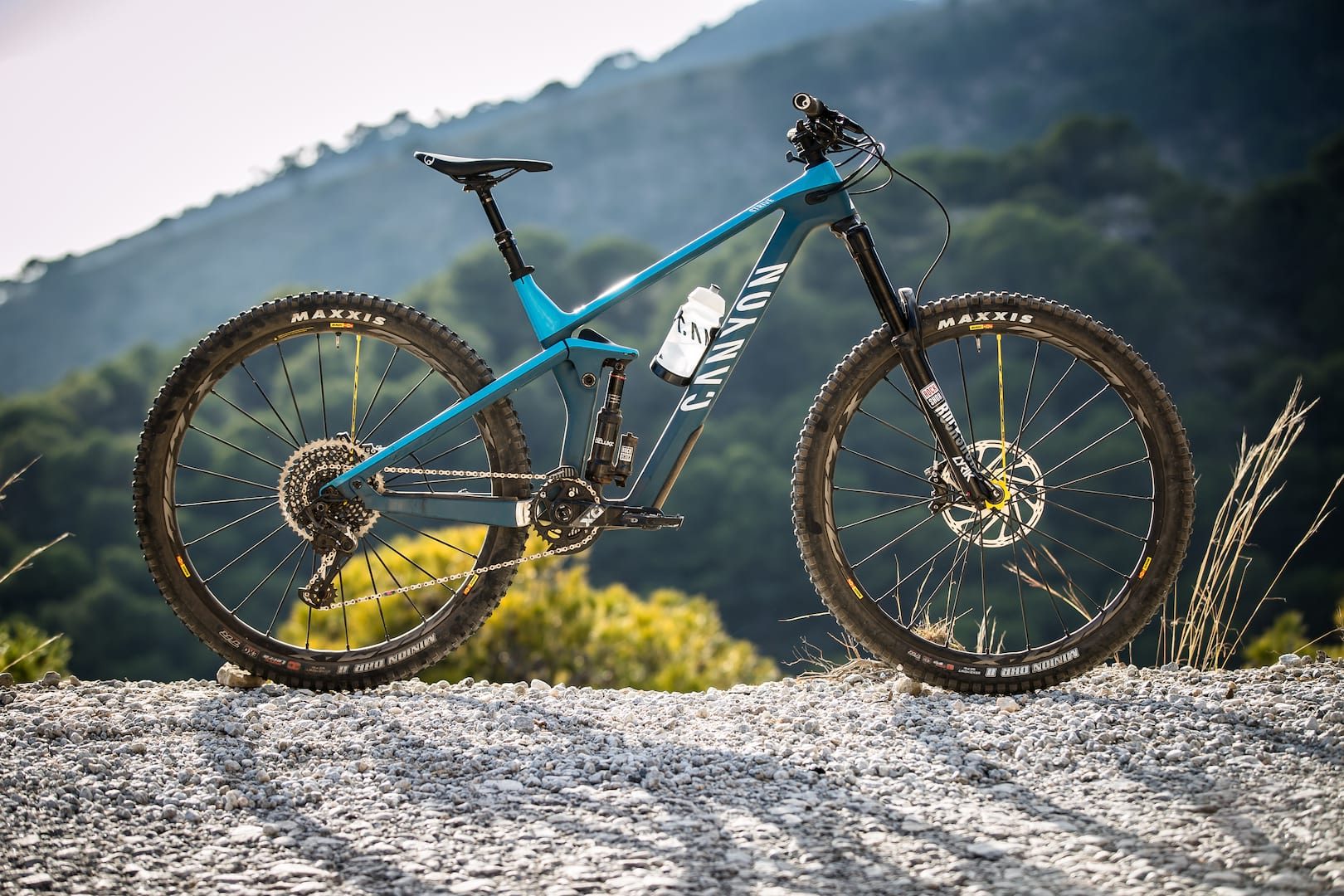
2019 Canyon Strive
The new Canyon Strive is unmistakably a Canyon Strive. The silhouette is almost the same, it has a similar shock location, and its main distinguishing feature from other enduro bikes remains, although much improved. More on that below.
In fact, to the untrained eye, the new Strive might slip under the radar, that is until you place it next to the previous version.
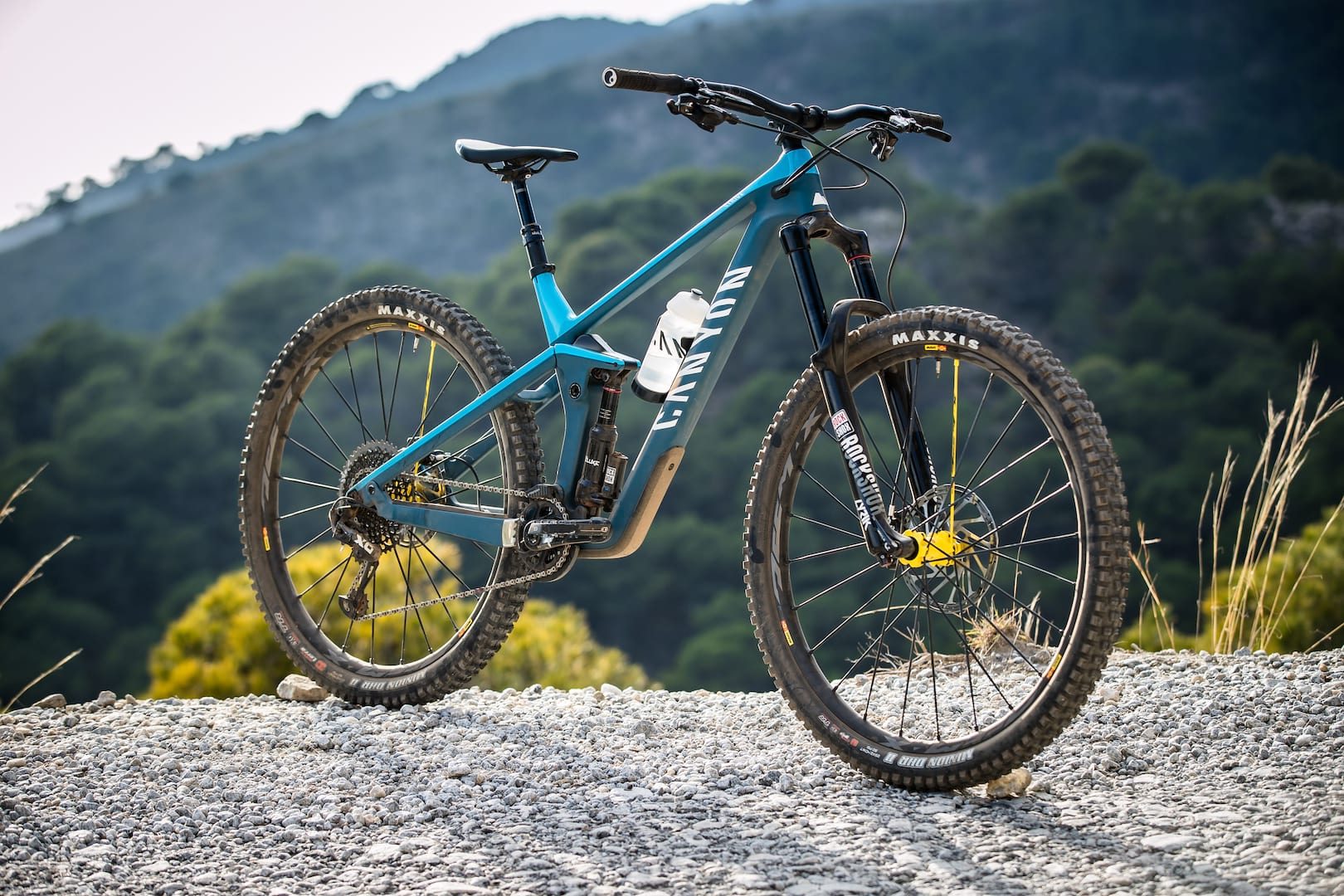
While both bikes have a similar layout they are years apart. It’s a bit like looking at an original Honda CRX then a Honda CRZ – they look kind of similar, until you actually see them together and then one of them looks radical and racy, and the other a little long in the tooth (ok, not quite the best comparison, the CRX is still amazing to look at after all. But you get the idea).
So after the initial shock of the Strive still, well, looking like a Strive, we delved deeper to see what exactly had changed and why it has taken so long for Canyon to refresh its EWS slayer.
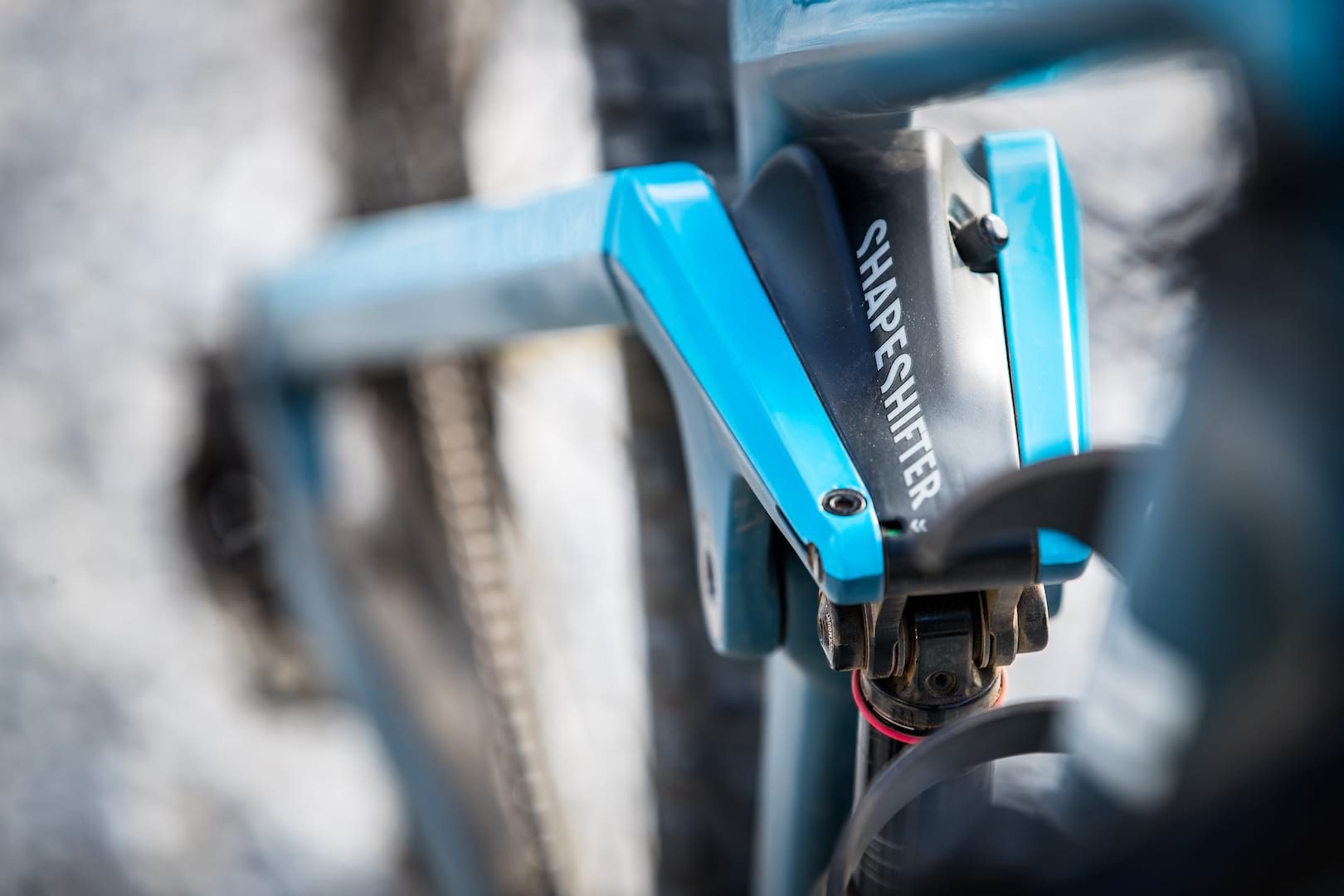
One of the major changes is the new Shapeshifter system, which uses components now manufactured by Fox Racing Shox. But before we get on to that let’s look at the frame material.
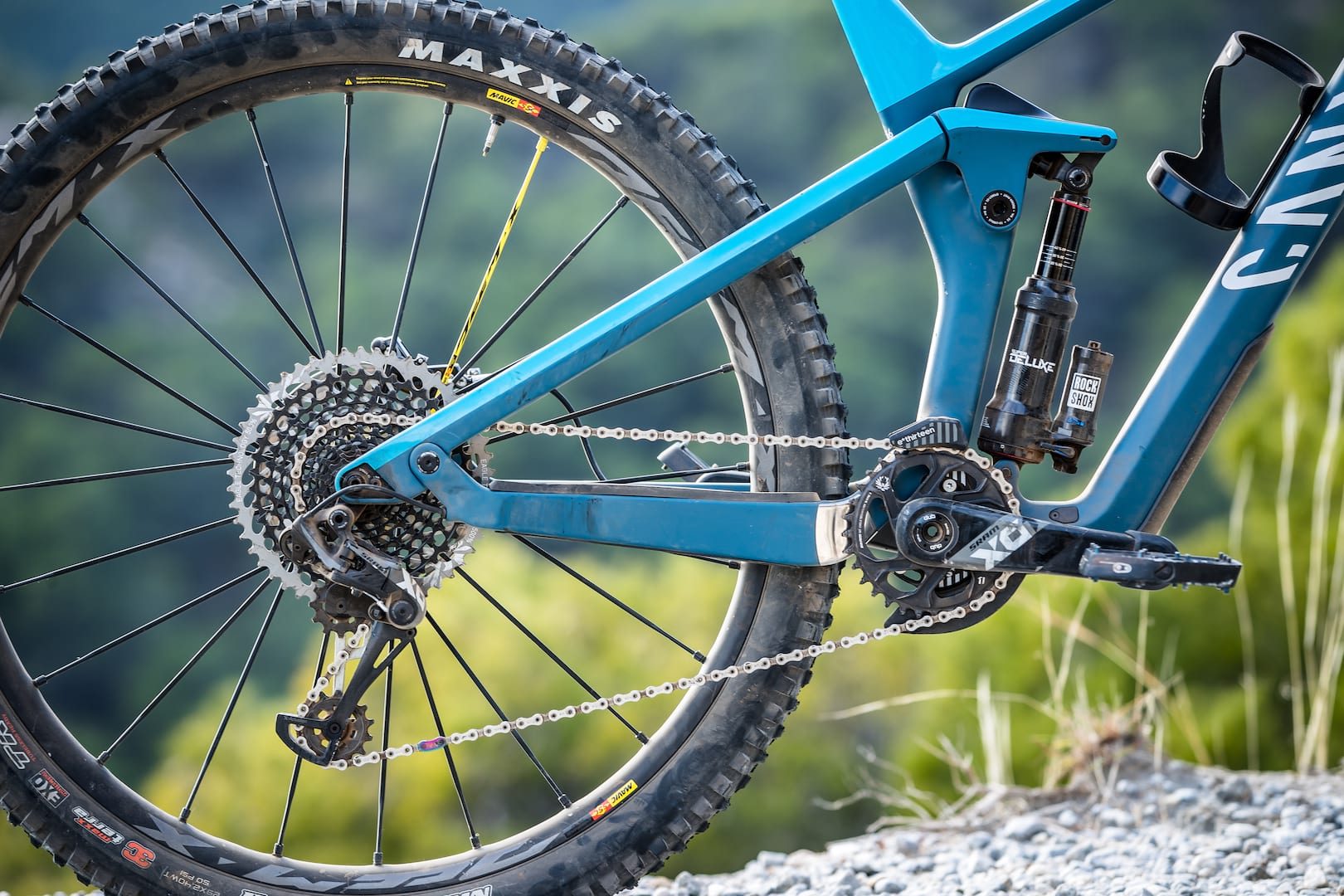
CF & CFR Carbon Frames
Canyon will offer the Strive in either carbon or…carbon.
This is a change from the previous model that came in both alloy and carbon. The two carbon framed bikes are distinguishable by their names; CF for the ‘base’ version that comes as a complete bike with 160mm forks, and CFR which is the ‘race’ version of the bike, the model we rode in Spain, that gets 170mm forks as a complete bike and has a frame weight that’s 300g less than the CF variant.
Both versions of the new Strive get the same 150mm rear wheel travel in DH mode, which drops to 135mm when set in XC/climb mode.
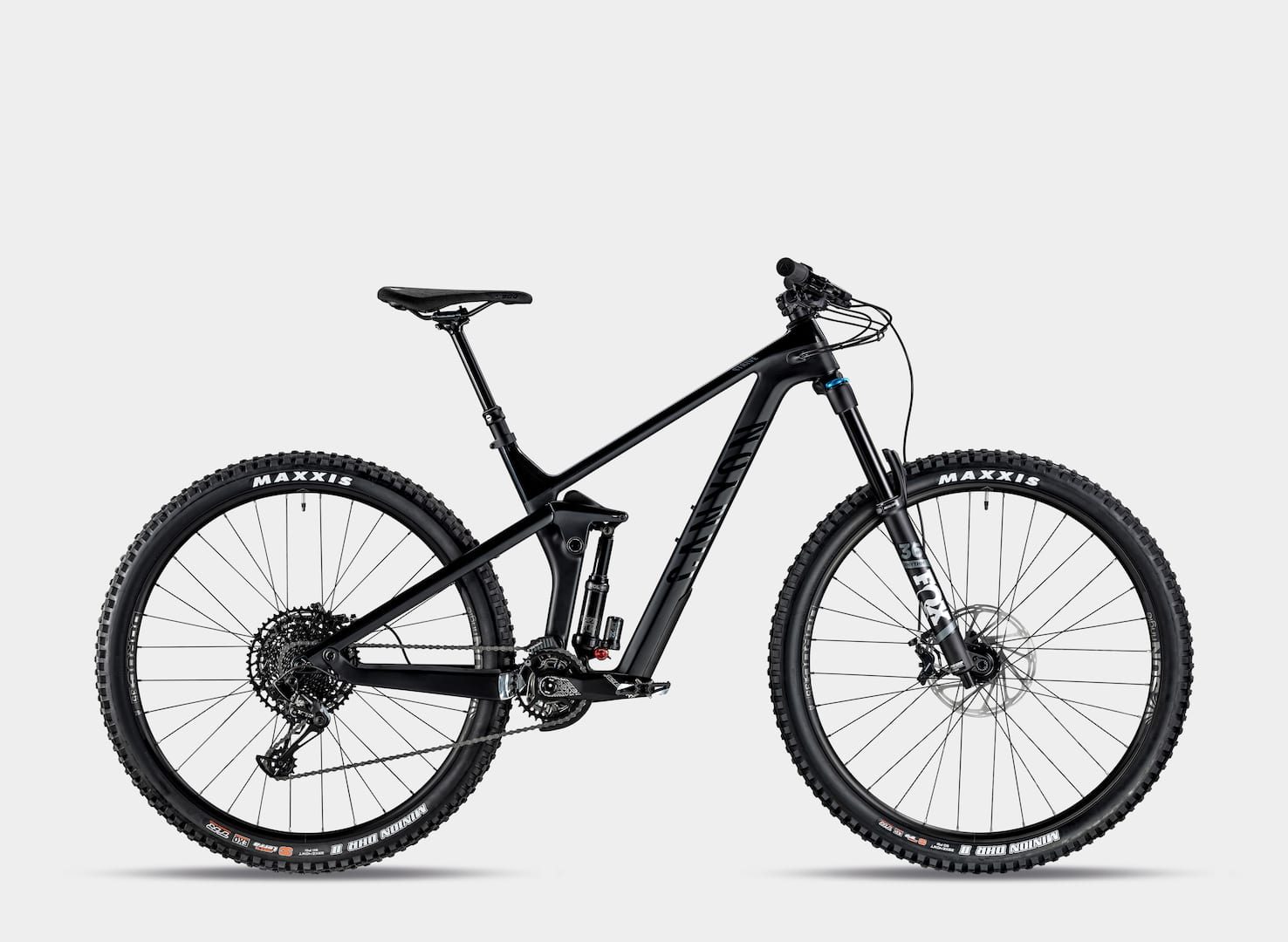
Now carbon usually equals expensive, and it does, but the entry-level Canyon Strive CF 5.0 built up with RockShox suspension, and SRAM 1×12 groupset will set you back £2,699. Not exactly pocket money, but once you add those components up you soon realise that it is in fact, a pretty sharp deal.
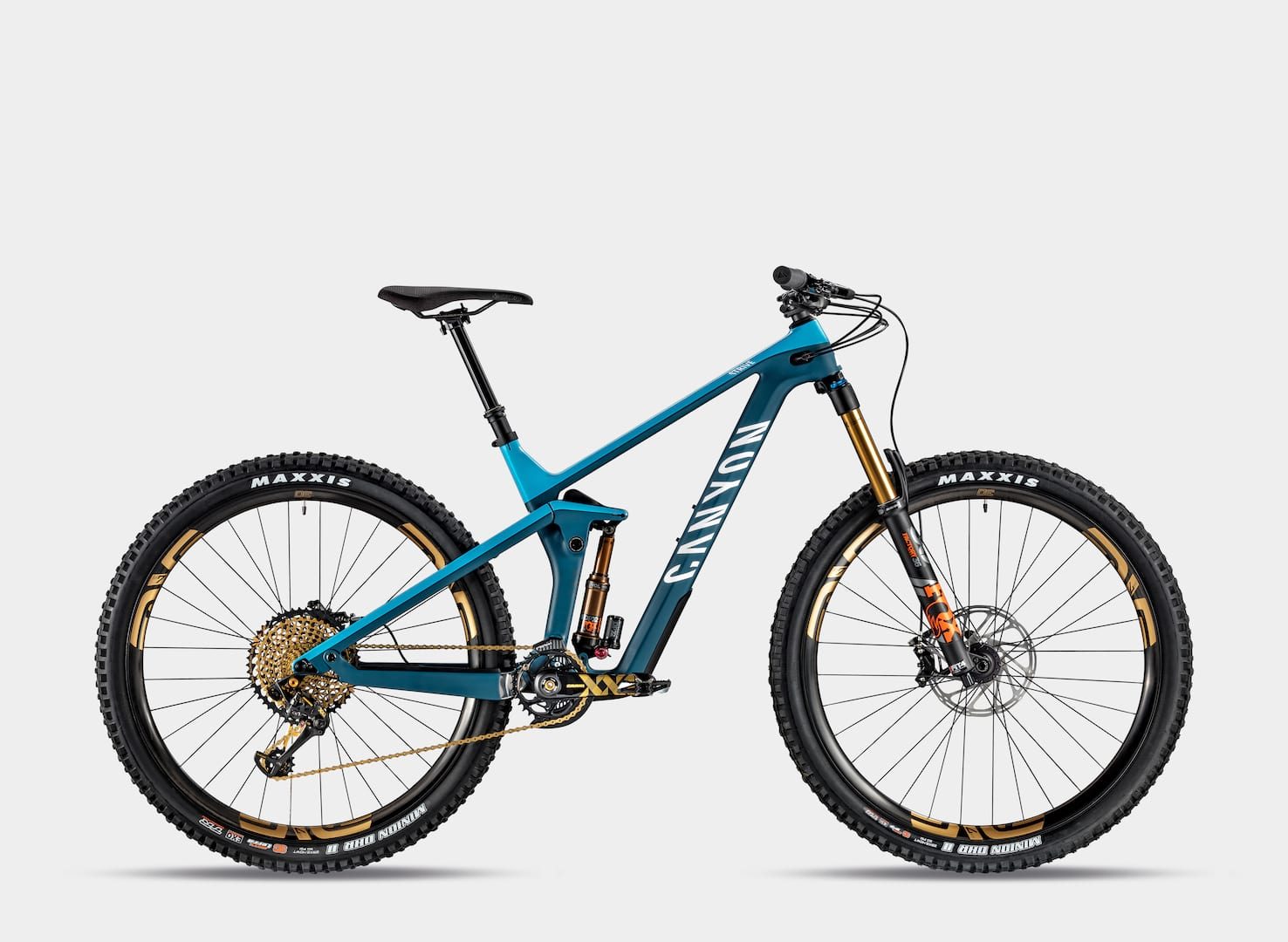
If you’re feeling flush then you could go for a CFR 9.0 Team edition bike like the one we tested for £4,999, which features the same kit Canyon’s EWS team is racing on in 2019. An even pricier CFR 9.0 LTD will be offered with Fox suspension, Chris King hubs and ENVE rims for £6,349.
In total there are six models to choose from to suit various wallet sizes, and there’s a CFR frame only option too, which happens to sell for the same price as the complete Strive CF 5.0!
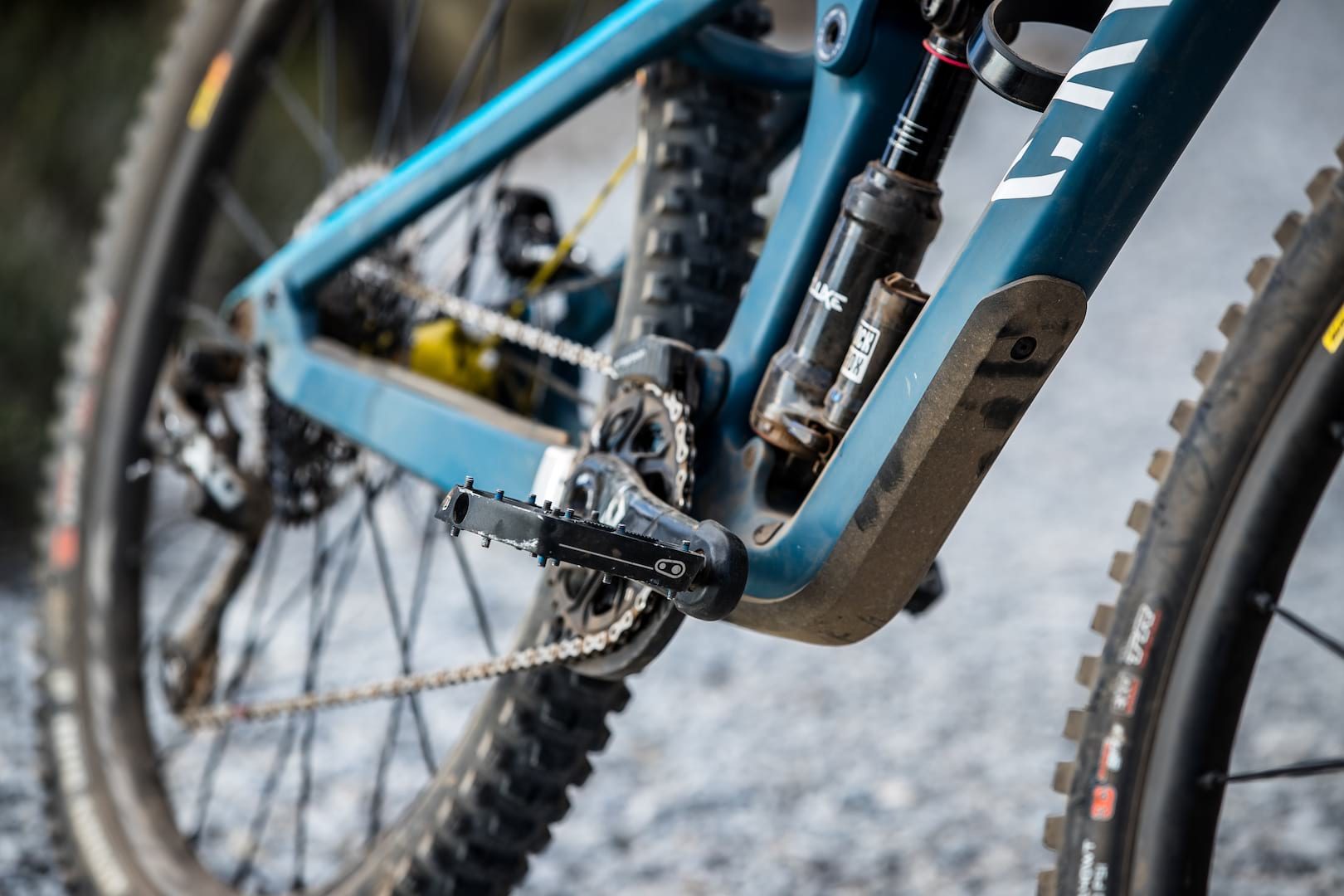
Canyon tells us that if it was to build an alloy bike with the same features, the same strength, and at the same weight, there wouldn’t actually be much difference in price between it and the carbon frames. With that in mind, and given the market’s general preference for carbon fibre, there was apparently little incentive for Canyon to offer an alloy frame option. So there you go.
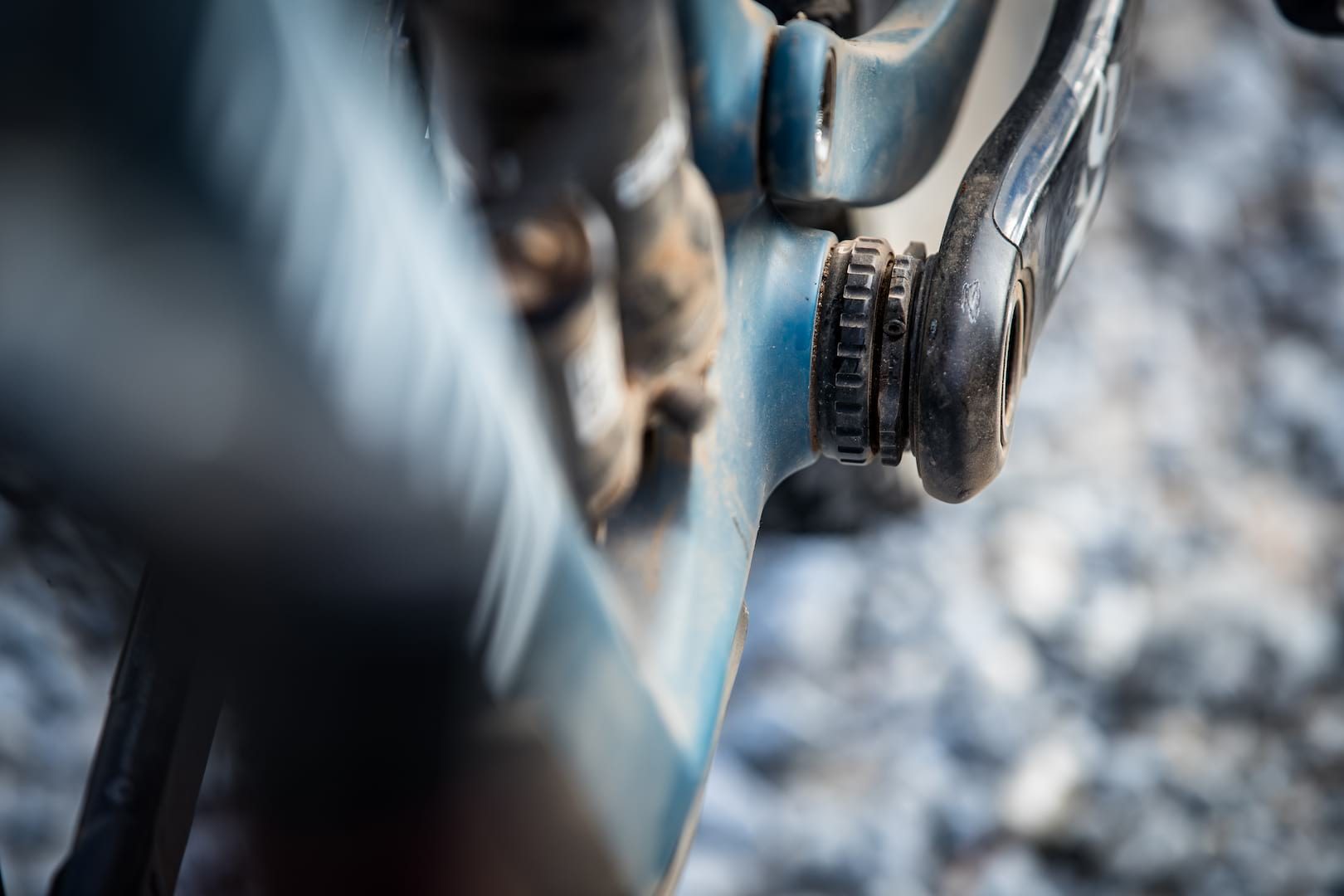
Canyon hopes that the design of the new Strive, along with the pricing will help to differentiate models in the range and help to avoid confusion for customers. This is probably why it isn’t likely we’ll see a Spectral 29er in the near future and why the new Strive comes only as a 29er.
Yup, the new Strive is carbon only and 29er only. Oh and it gets an on-trend short offset fork. So while the new Strive looks like the old one, already it’s radically different. And we haven’t even scratched the surface…
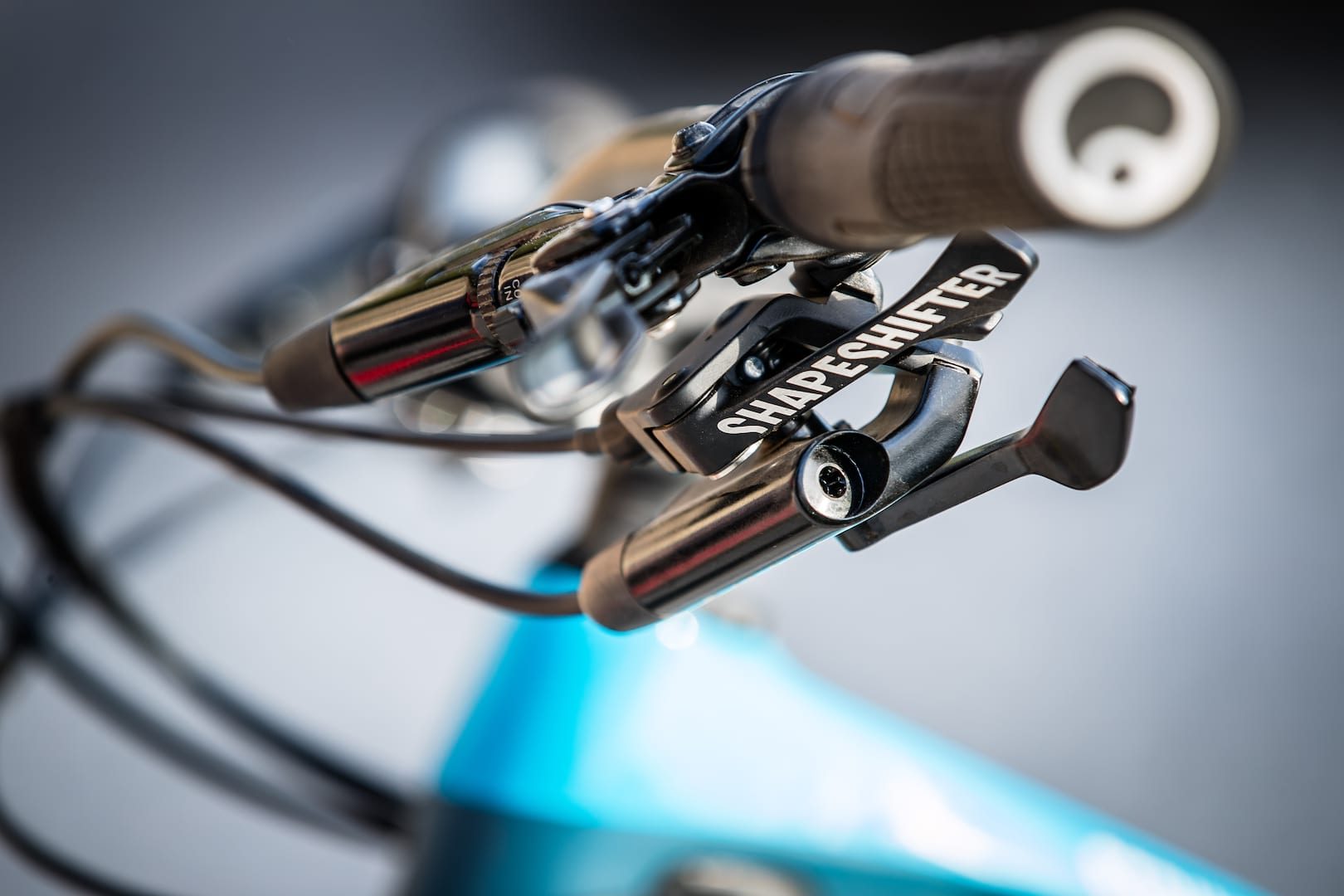
2019 Canyon Strive Shapeshifter 2.0
Canyon wasn’t the first manufacturer to play around with the idea of on-the-fly adjustable geometry and suspension (a system that puts you in a steeper position for the climbs and a slacker one for the descents), but alongside Scott and Cannondale, it is one of the few manufacturers to continue to develop the system.
The original Shapeshifter featured on the first Strive used a system that would steepen the head angle and increase the BB height at the touch of a lever, then reverse that transformation with another click. But it required timing and an unnatural body movement and weight shift in order to get it to work.
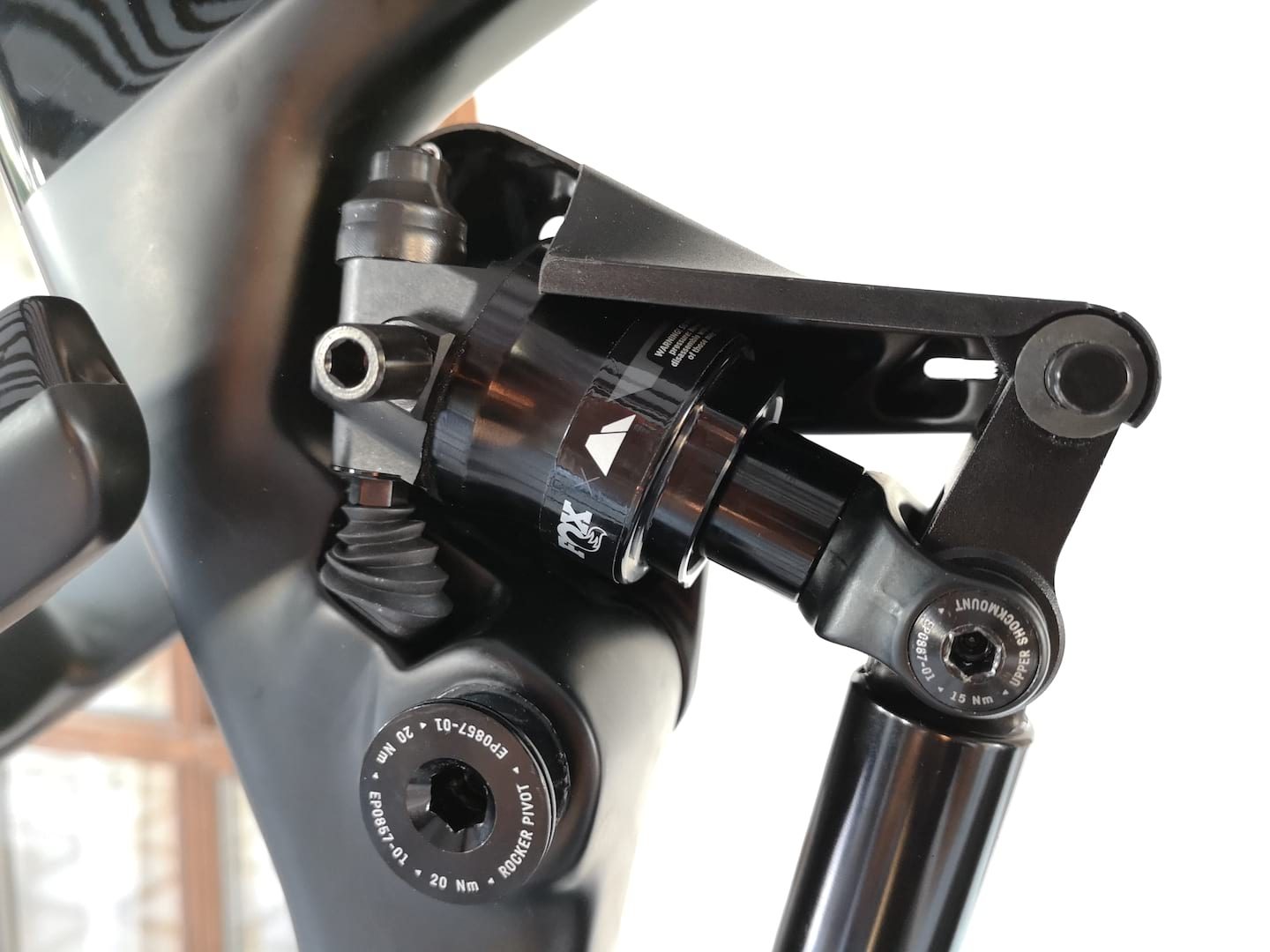

For 2.0, Canyon took a long look at some of the complaints and comments of the original system and attempted to fix not just some of them but all of them.
Canyon teamed up with Fox for Shapeshifter 2.0, with the suspension gurus helping with the development of the short piston that changes the suspension travel and actuates the shift in geometry. If you hadn’t already realised, Fox is pretty good with putting together suspension components, so it seem like a pretty logical partner. Not only did Fox help with development, but it also takes care of the manufacturing of the short shock and Fox will even handle servicing and warranty on it too.
With the squishy side of the Shapeshifter being handled by a trusted manufacturer, Canyon turned its attention to the kinematics of the system. The redesigned linkage means that Shapeshifter 2.0 slackens the Strive’s head and seat angles by 1.5° when set in the DH position.
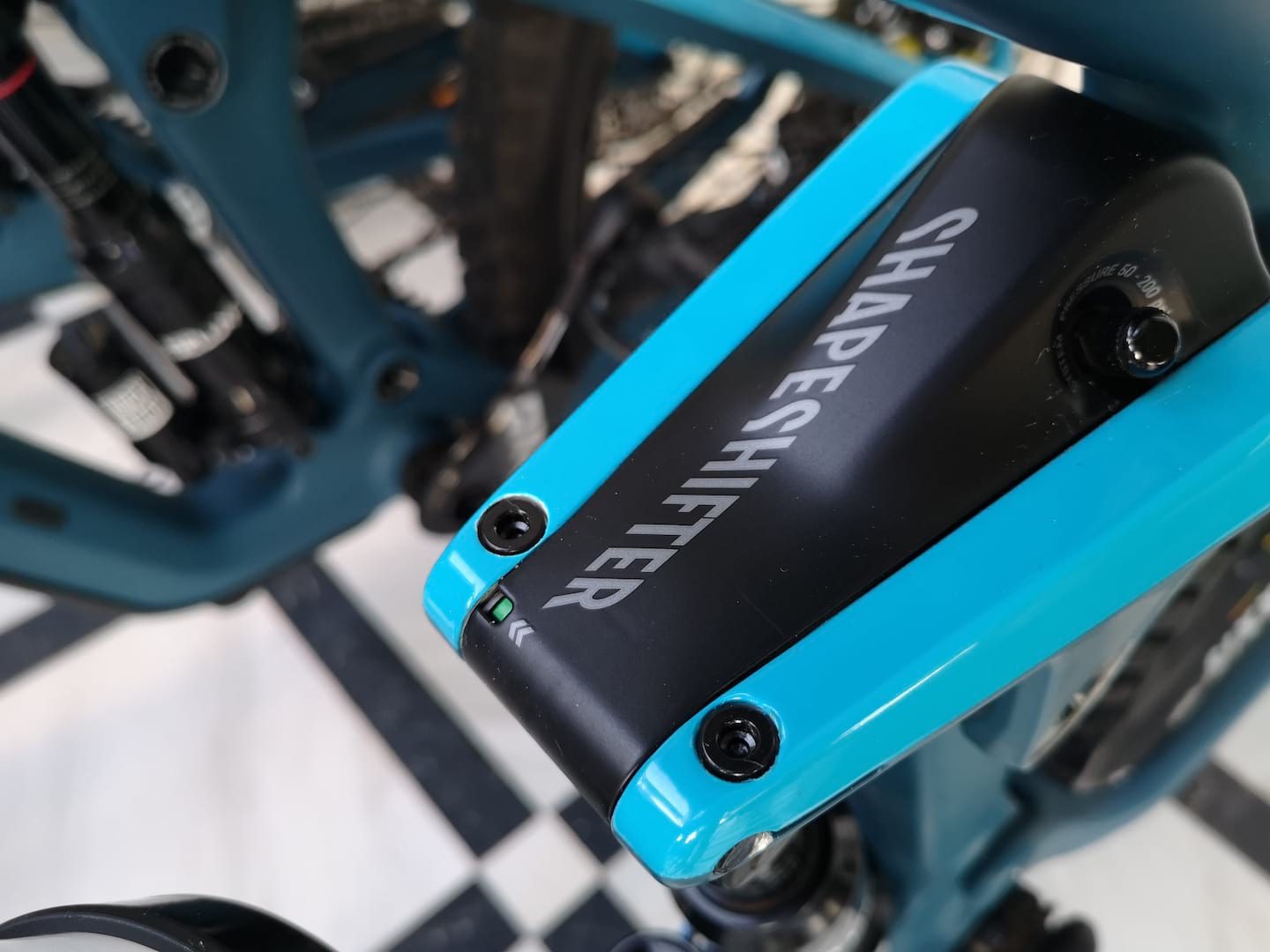
That’s pretty similar to what the original system did, but now the whole system works seamlessly, with very little input from the rider. The new system no longer requires an awkward weight shift to activate, and because the low-pressure Fox piston and updated kinematics handle the geometry shift, you also don’t need to worry too much about where and when you want a geo shift.
For example, with the original Strive you could climb up a fire road in XC mode, then before you wanted to descend you would need to hit the Shapeshifter lever, make a deliberate weight shift to the rear of the bike, and only then could you focus on the fun stuff.
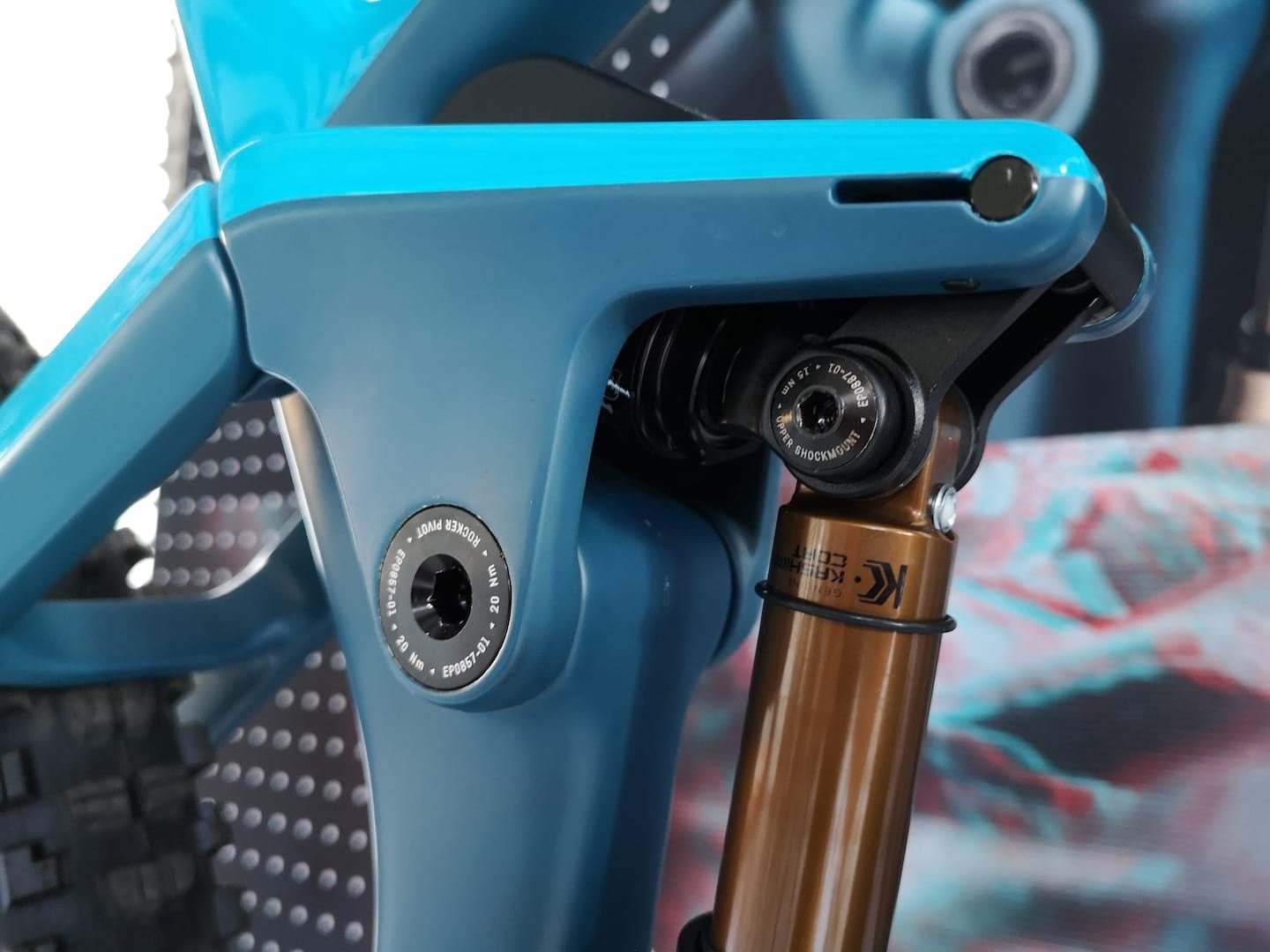
The new system doesn’t need any of that though. The Fox manufactured piston and new linkage don’t require that rider movement, and instead can use hits through the rear suspension to readjust automatically depending on the setting you’ve chosen.
The new system is faster, easier to use, and allows you to maintain flow from one trail feature to the next. It also means you can play around with it on the flat, or when pumping through berms and bumps, something the old bike wasn’t capable of.
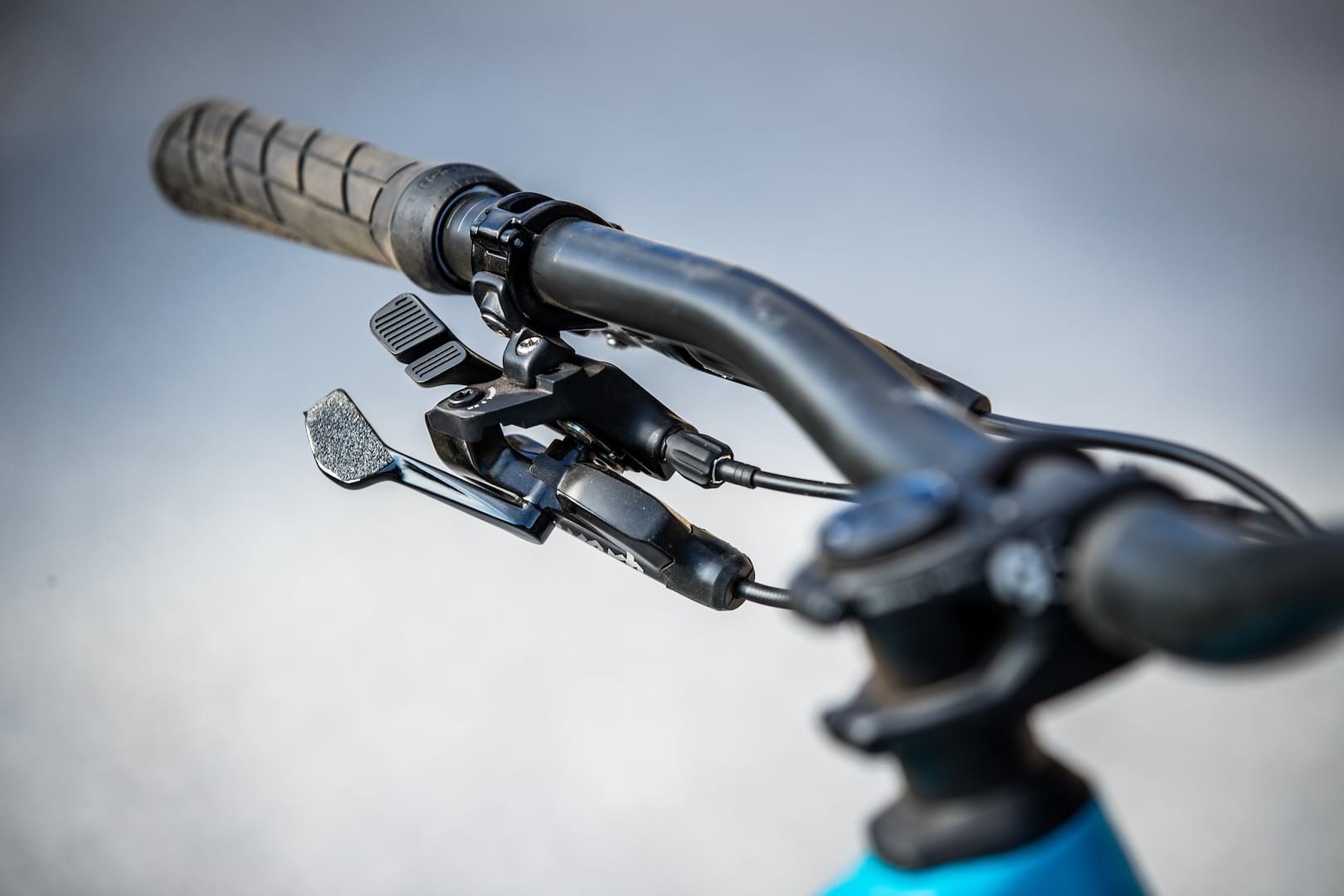
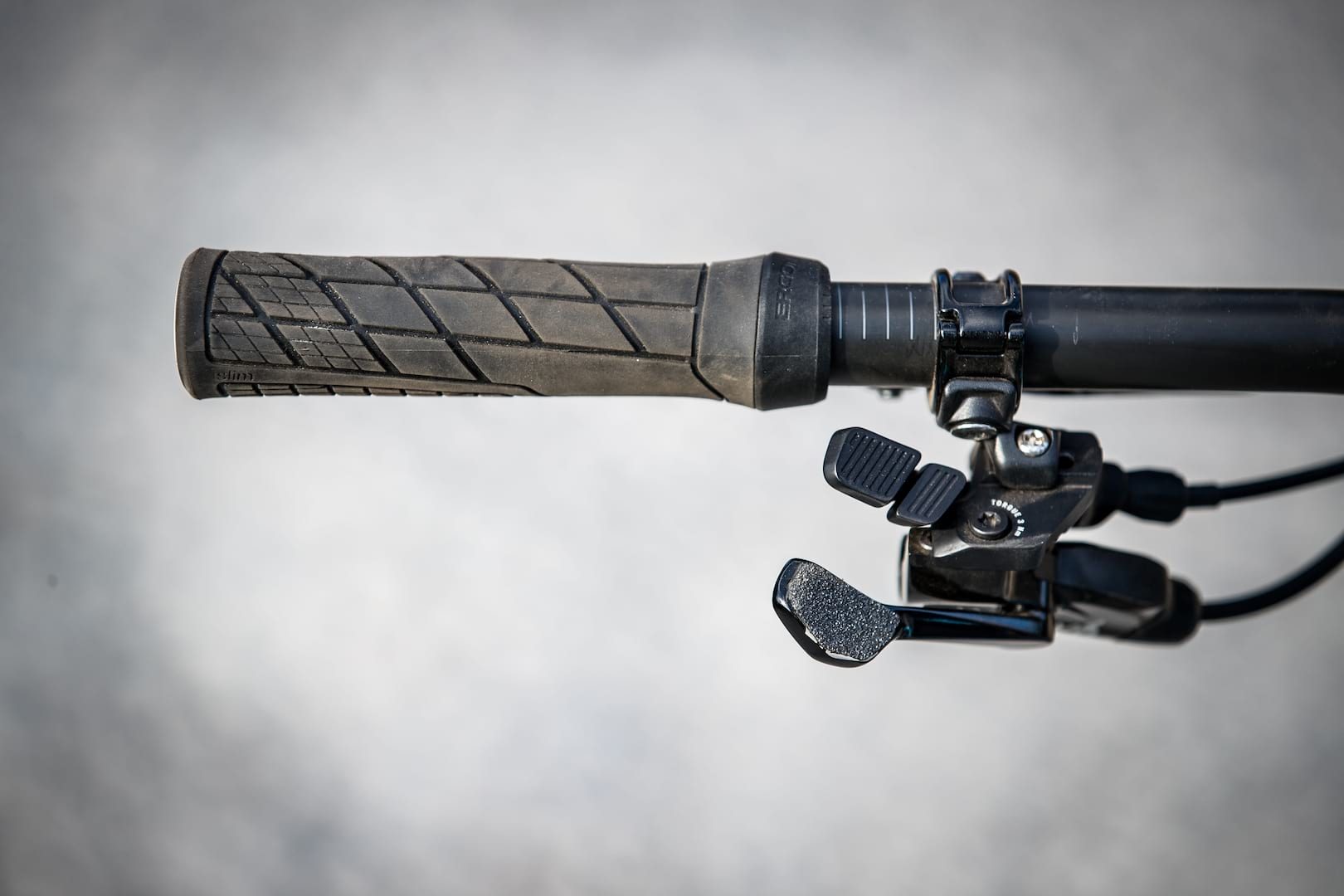
It gets better, as the new Shapeshifter lever is an underbar design and is compatible with SRAM’s Matchmaker system, meaning that you can fit a 1x Reverb remote beneath it. It will even allow you to mount some popular cable operated dropper posts too.
This means that you end up with a lever that looks like a larger front derailleur shifter, only with a 3rd dropper lever underneath. It’s easily the neatest solution we have seen by far, and we hope other manufacturers take note. *ahem* Scott, we’re looking at you.
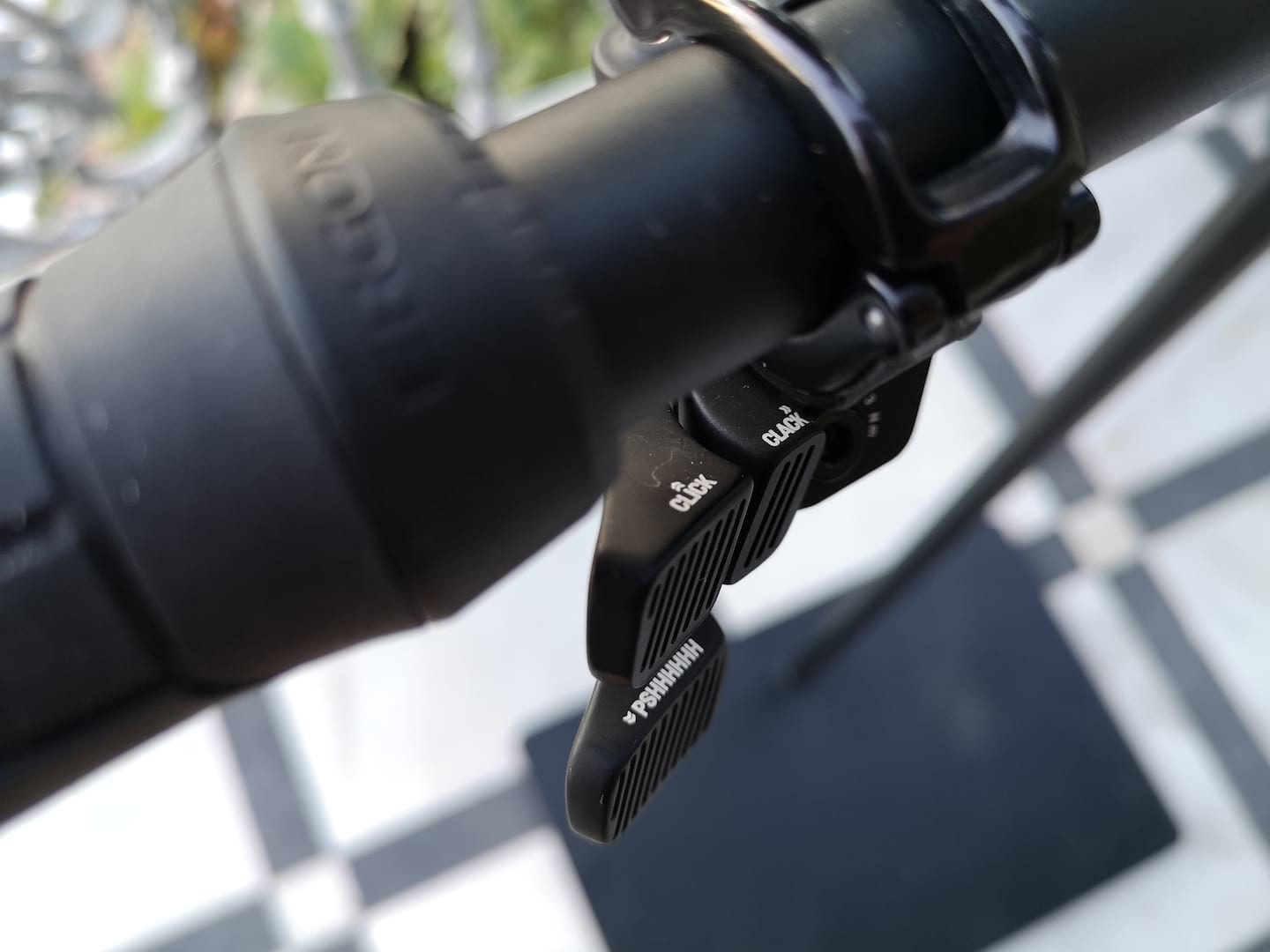
As soon as you tap the lever, it’s evident that Canyon has put a lot of time and effort into the new control. Rather pleasant, audible Click and Clacks are emitted from the lever when activating and deactivated ShapeShifter 2.0, it’s one of those mechanical movements that are so precise, and accurate, that it’s actually quite satisfying to play around with. Click, clack, click, clack.
2019 Canyon Strive Geometry
It’s become the norm that bike manufacturers won’t give the geometry details to media before they’ve actually ridden a bike. The idea being that the brands don’t want to plant any seeds and give us media types a reason to “poo poo” a bike because it isn’t long enough or slack enough.
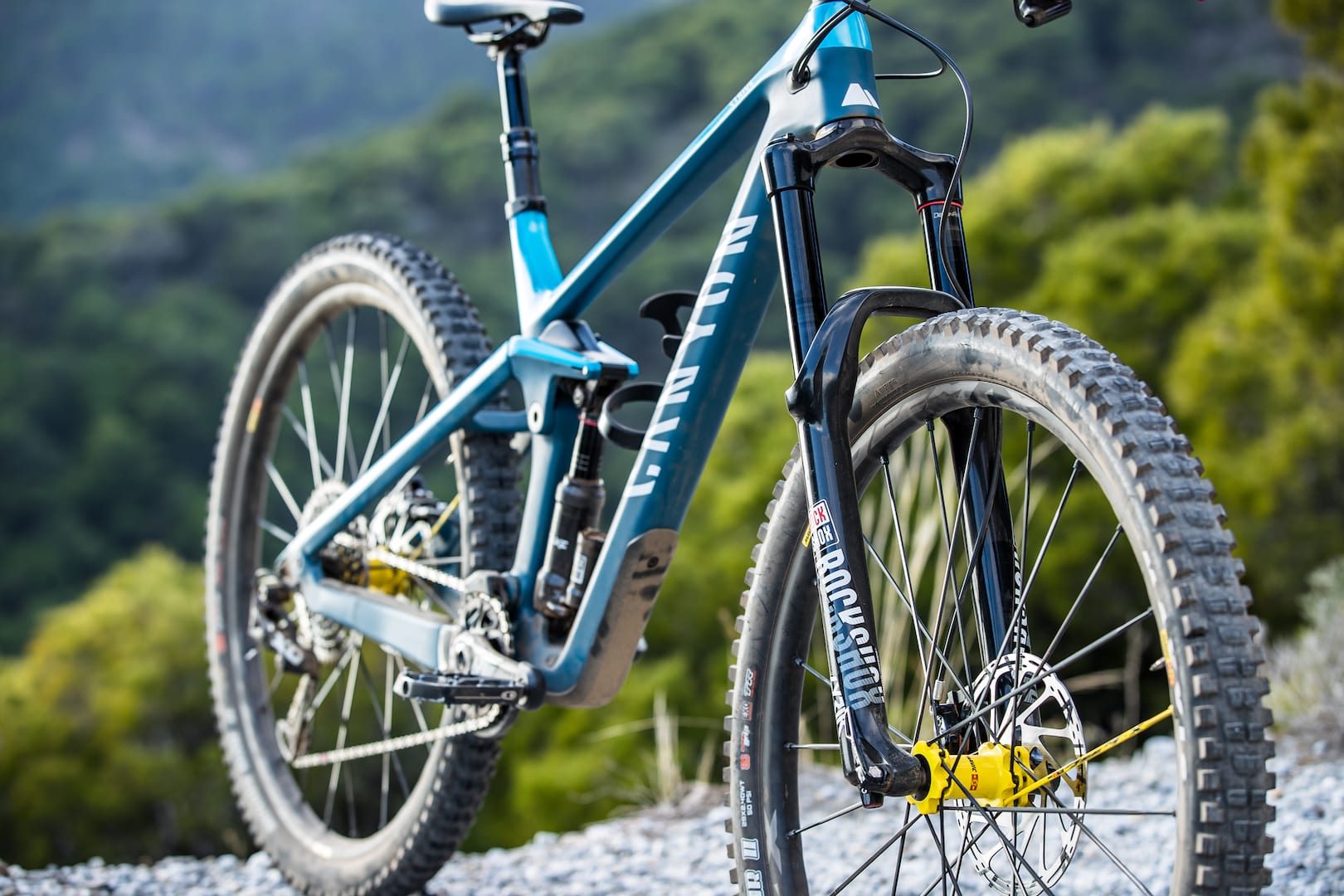
So before I give you the numbers I’ll tell you that at 178cm I was given a size large bike to rag around Malaga. As soon as I threw a let over it I was impressed by the standover height, and I didn’t feel that the 2019 Strive was too short. On the other hand I didn’t feel that the bike was overly long either. In the spirit of Goldilocks, the sizing actually felt just about right.
After a full day of riding the bike around the rocky, dusty and jumpy trails of Southern Spain I still feel that the sizing is spot on. And now that I’ve seen the numbers I can see why.
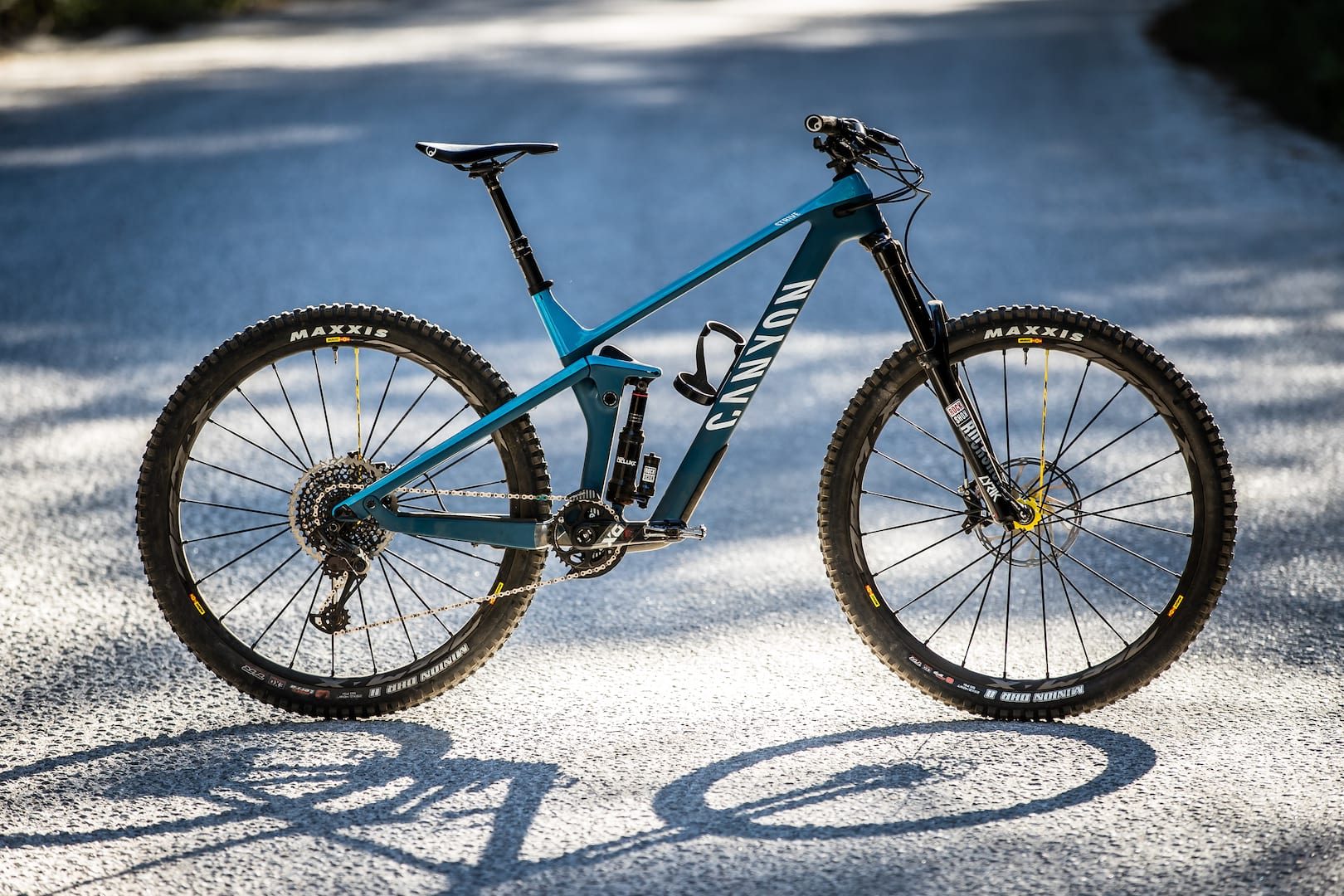
For the 2019 Strive, Canyon has really pumped up the geo and we’re looking at a bike that is considerably longer than the previous generation model – longer than anything else in the 2019 Canyon range actually, but it isn’t overly slack.
The Large frame I rode has a reach of 470mm. That’s the same as a medium frame Mondraker Foxy 29er, and 5mm shorter than my own size L Transition Scout. Because the Strive’s head angle is just 66° at its slackest though, it doesn’t feel as long as those numbers suggest. Maybe the shorter offset fork plays a role here too.
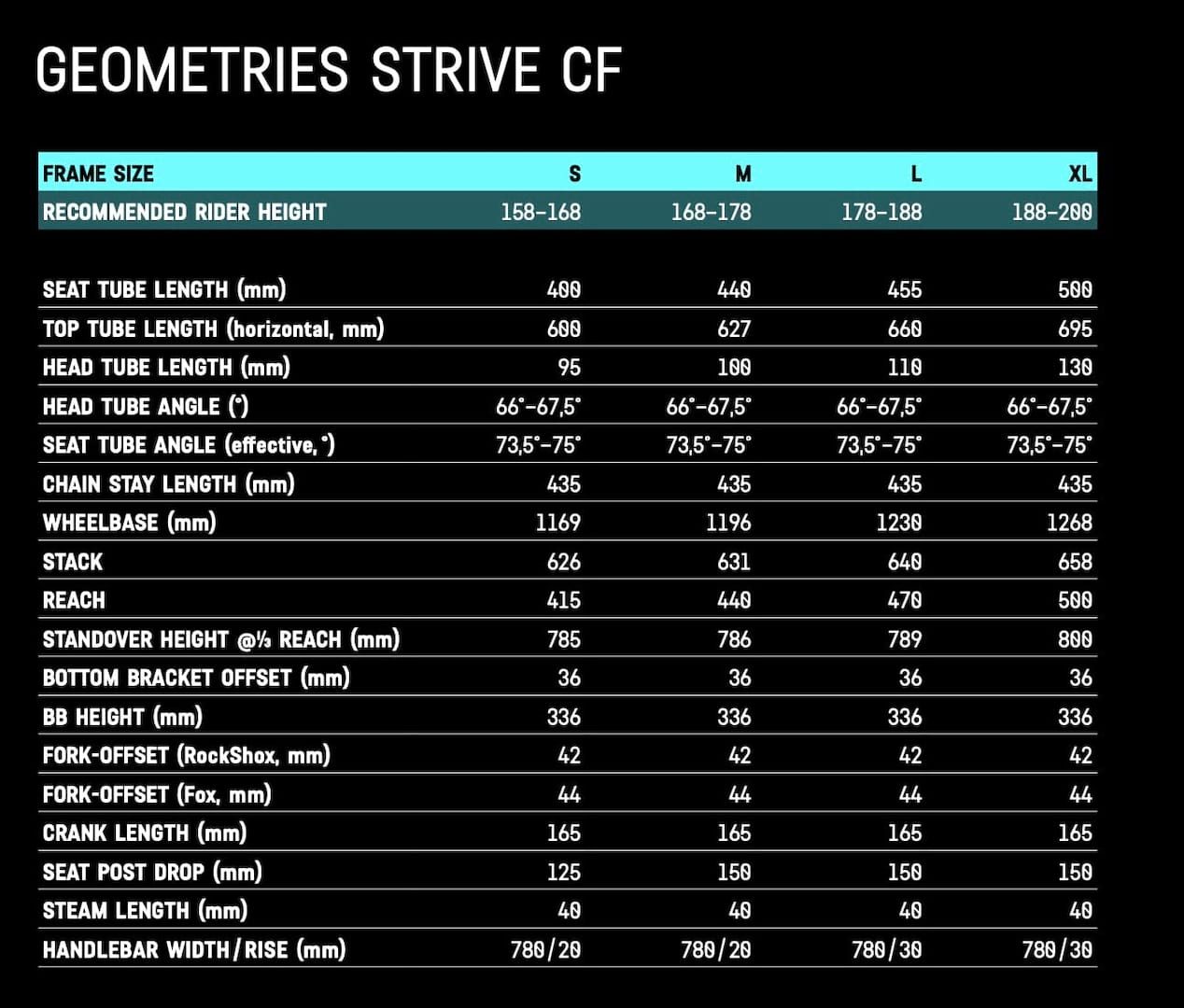
Other important numbers include the 67.5° head angle and 75° seat angle when the Shapeshifter has been set in the XC mode. This helps to push your weight and riding position forward on the bike, which should make for more comfortable and efficient climbing.
Every size of the 2019 Canyon Strive has 435mm chain stays, but Canyon does give the size L and XL bikes slightly taller 30mm rise bars, and every bike has a 150mm dropper except the small frame which has a 125mm drop post instead.
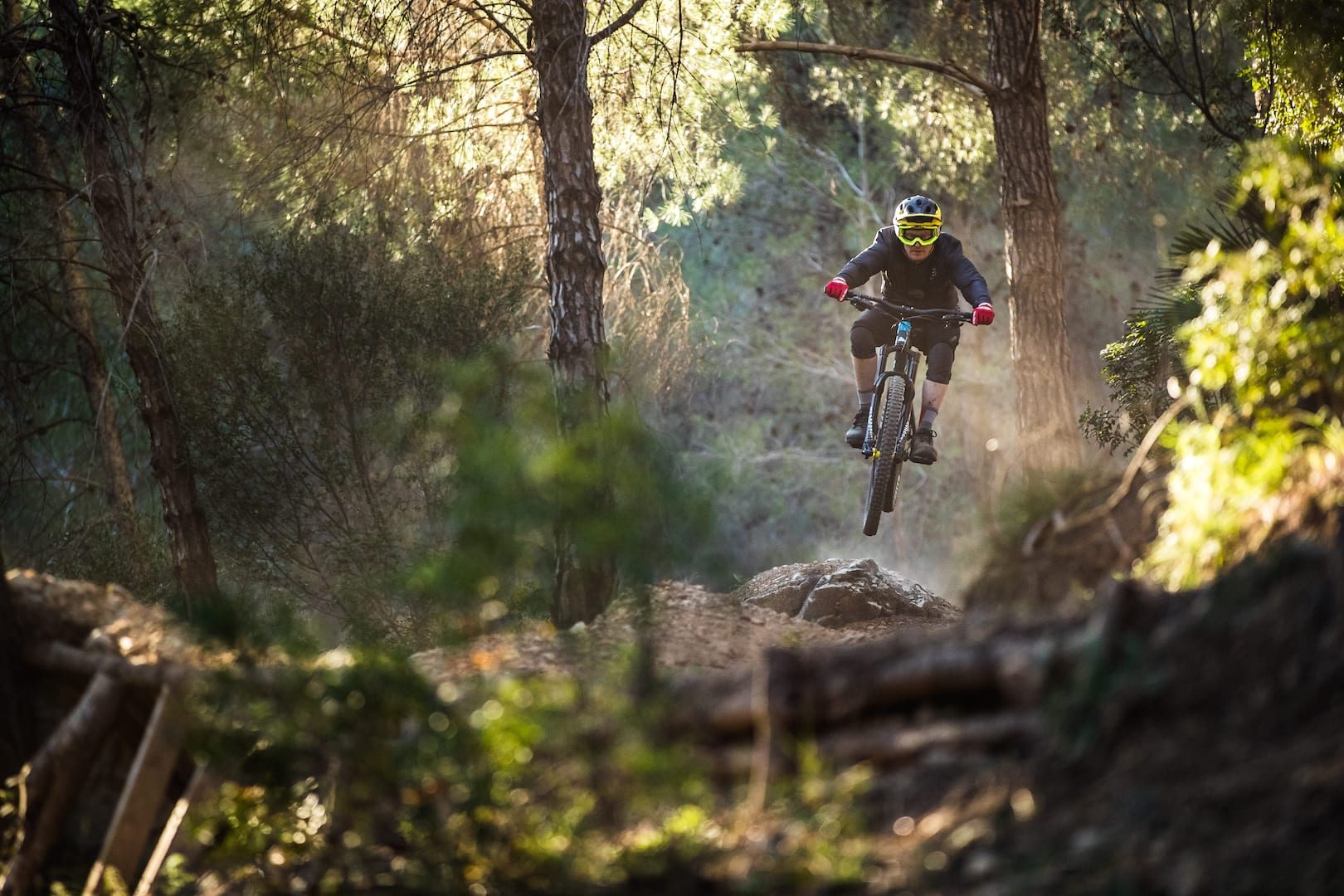
2019 Canyon Strive First Ride Impressions
Canyon flew us all out to Malaga to test the 2019 Canyon Strive which was perfect for 2 reasons. 1) It was warm and sunny, and 2) I’ve been here and ridden here before on two different bikes, so I knew exactly what to expect.
I’m going to start this ride report how a ride usually pans out and that’s with the climb. As we only had a day on the Strive before flying home, Canyon had booked an uplift for us, which meant we only rode a single off-road climb. No, this wasn’t enough to test how well the Shapeshifter works, and yes I do look forward to riding a Strive on our local trails to really get a feel for it’s climbing credentials.
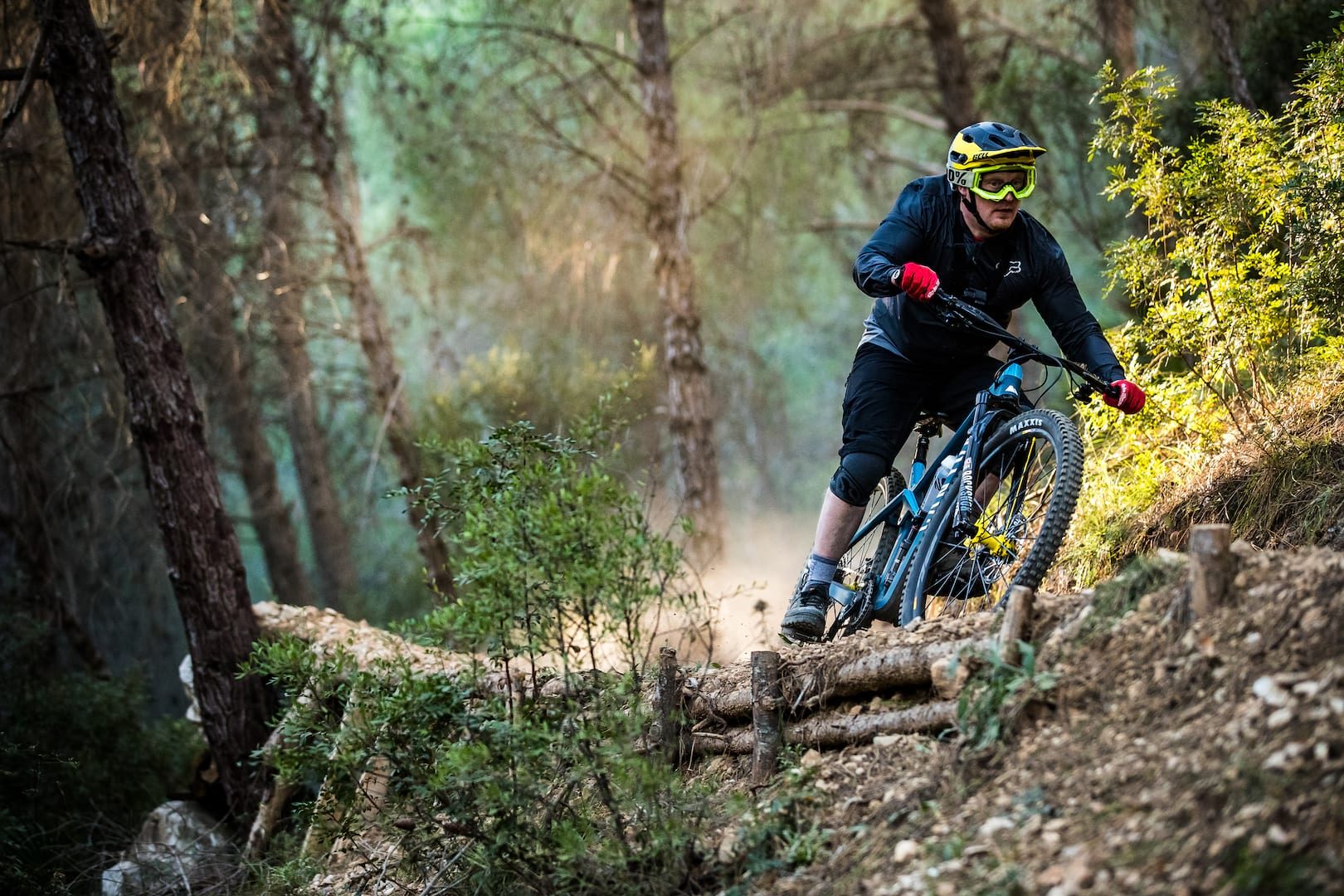
What I can say is that in DH mode the 2019 Strive actually climbs really well, but click it to XC mode and you instantly feel any suspension bob melt away. Regular riders will know I’m not a fan of climbing, but on the Strive I stuck to Fabien Barel’s rear wheel and stayed ahead of most of the pack. Well, on the single climb we rode that is.
Before that climb, my first experience of the Canyon Strive actually started at the bottom of a road waiting to be uplifted. On the tarmac, the rear end of the 2019 Strive feels slightly over damped and I was concerned that although I was running 30% sag I might need a little more air. Once I hit dirt though, I never thought about either points again.
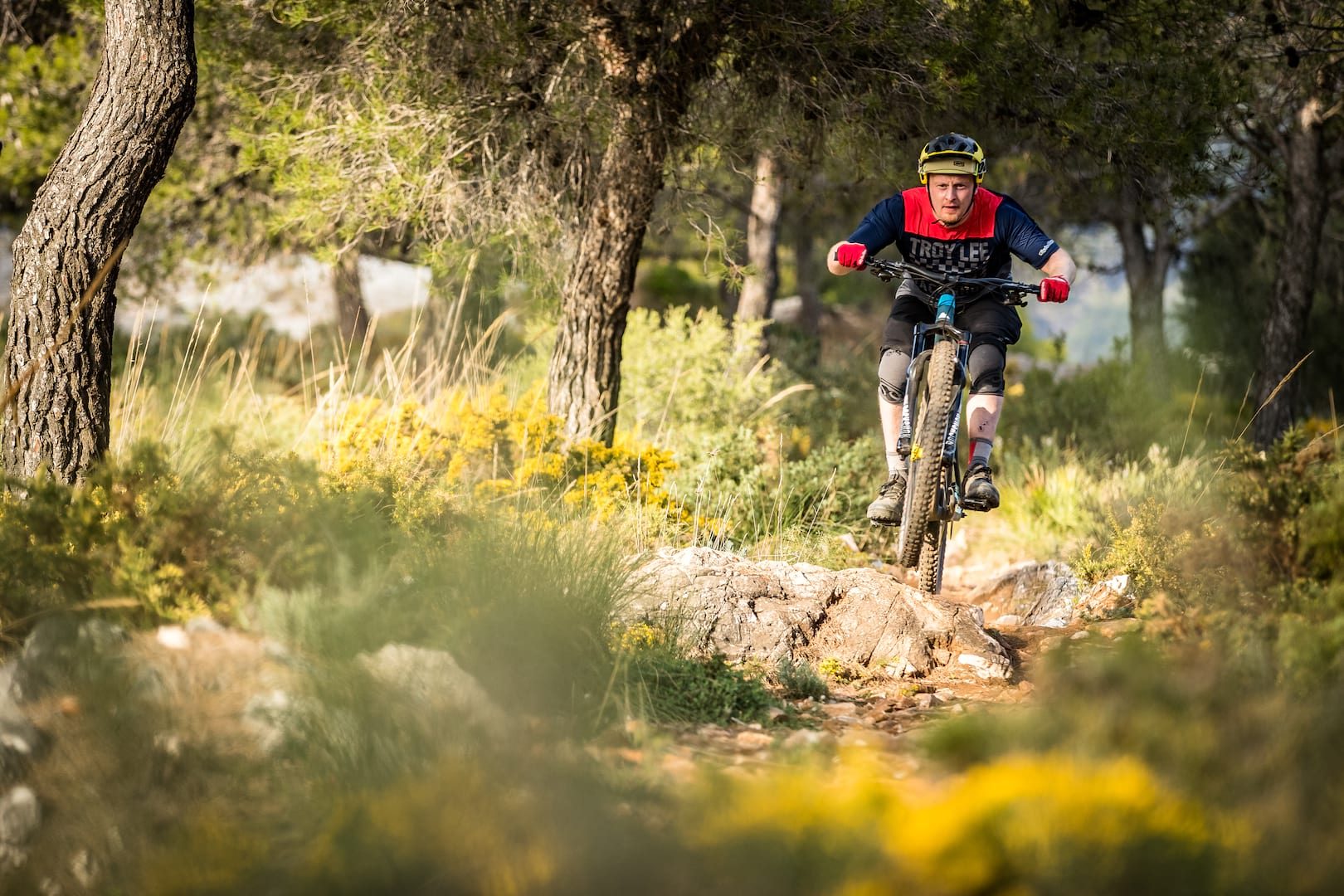
My first experience of the bike on the dirt was an eye opener. The trail starts from a road in to a corner made of sand, dust and rocks. There’s a left hand turn, a small kicker then a right handed berm-to-drop straight into a left hander. You then accelerate in to a drop, another drop, another drop in to a double, and then the trail gets challenging.
Continuing down the trail and there are more drops, a larger double, a sharp chicane, and solid rock features that show the scars of rock strikes. We then regroup.
The next section takes us though a tight forest trail, in to awkward rock drops and then through rock gardens that really test how well a 29er can maintain its momentum. We send a few large drops, hit a few more jumps and come to the end.
What I’m getting at here is that the trails we rode, this one is actually called Happy Days and I’ve ridden it countless times before, were the perfect test arena for a long travel 29er enduro race bike.
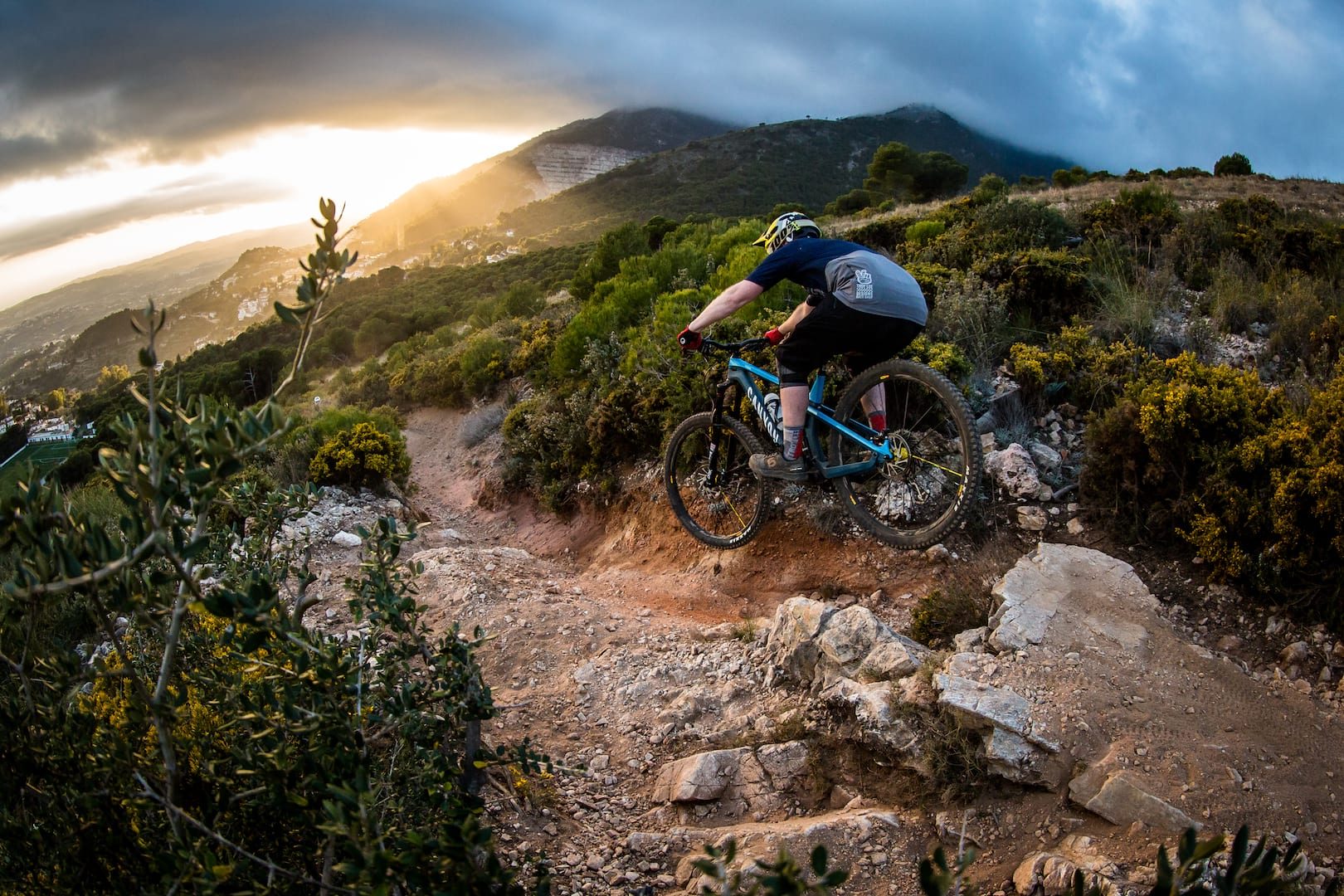
On my second run I relaxed a little, hit the same lines, but thought a bit more about what the bike was doing. My god whatever the Strive was doing, it was doing it really well. The rear suspension never once came to my mind, it soaks up the small bumps, sits into it’s mid-stroke really effectively and ramps up nicely for a good ‘pop’.
That’s Canyon’s Triple Phase suspension at play and anyone who has ridden the new Spectral will know how good the system is, but on the Strive the first phase seems to be more supple, handling smaller trail obstacles with ease. It still maintains the supportive mid-stroke, while ensuring there’s plenty of travel left over for the biggest of hits.
And how good is the Lyrik RC2? I know that Ross rated it when he tested it last year, but I’ve spent the last 12 months on a Fox Factory 36 and now I wonder if I should have a change.
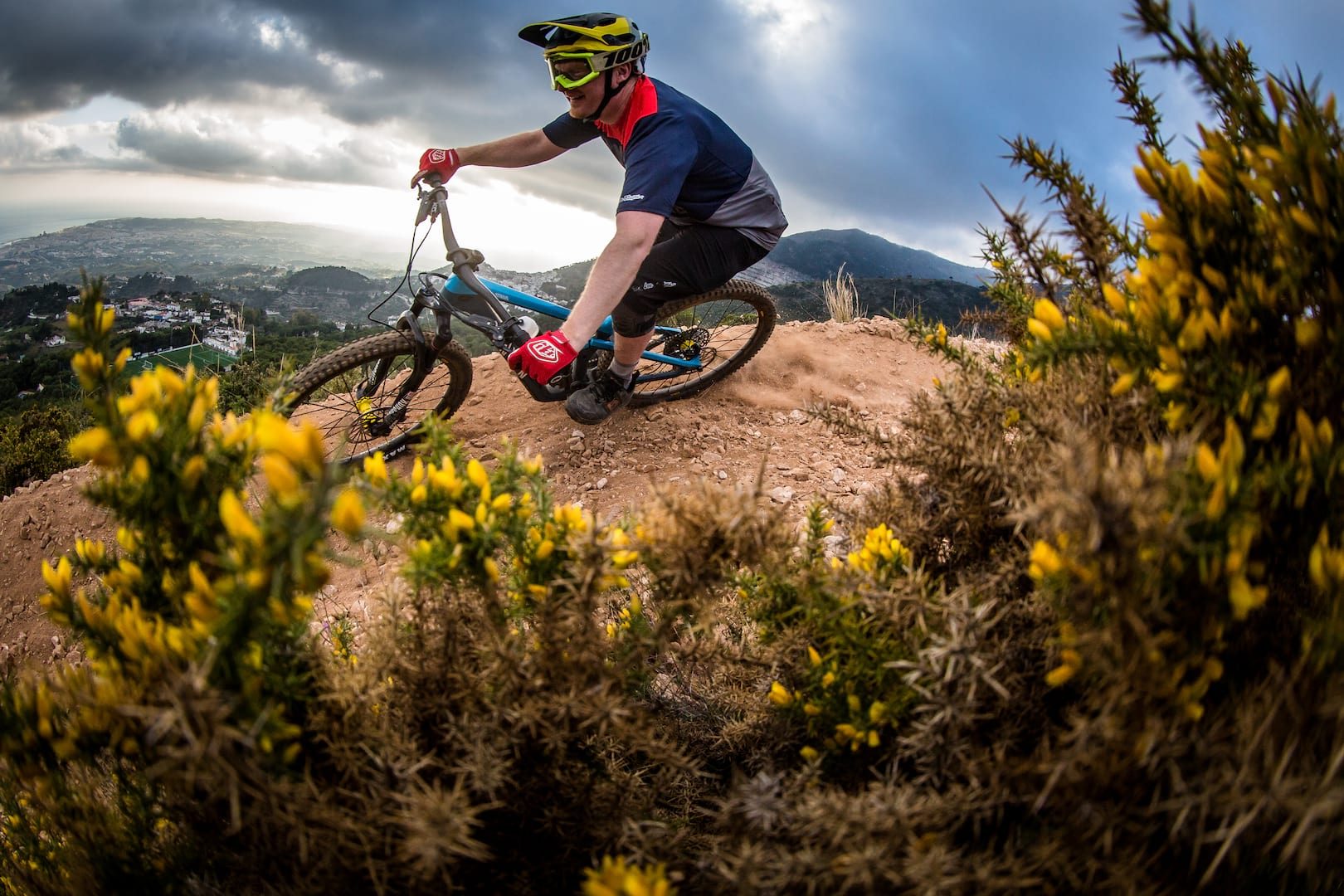
As the trails became progressively wilder, jumper and the drops doubled in size, I was seriously impressed with how well the Canyon Strive handled everything. The bike is a serious confidence booster. If you can watch an EWS rider hit something and then think “actually I can have that too” and then actually nail it, you can be sure that Canyon has done its homework right.
What makes the Strive even more impressive is that it never really felt like too much bike. When trails became mellower, flowy and more relaxed the Strive continued to deliver the goods. I feel like I could take the Strive on an XC loop and have as much fun on it as I could at Revolution Bike Park.
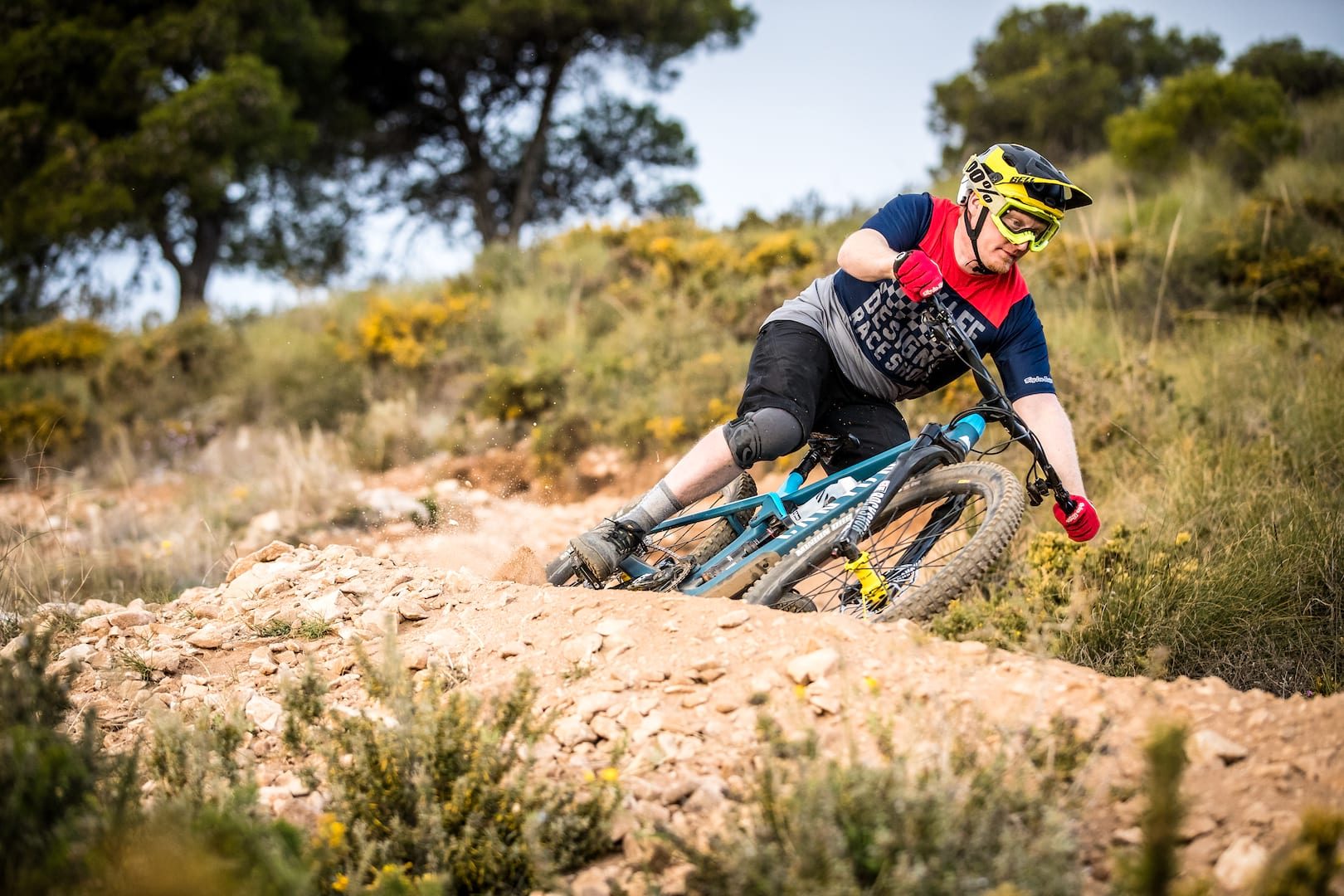
3 Things I’d Change About The 2019 Canyon Strive
- The only item that let me down on the Strive was the rear tyre. Perhaps it was my over indulgence at Christmas, but I would have liked to see Maxxis Double Down tyres on the bike for these trails
- The indicator window for the Shapeshifter on the prototype bikes didn’t line up with the indicator markings. This is meant to already be solved on production bikes
- There needs to be an XXL bike for taller riders. A large is great for me, and I think I could even get away on an XL. XXL is a must
3 Things I Loved About The 2019 Canyon Strive
- Although I worry about super tall people, I’m really happy with the geo on the 2019 Canyon Strive
- The Shapeshifter lever is a serious piece of engineering. Really enjoyable to use and feel like it will last forever
- This is one super capable bike, but one that doesn’t make you feel over biked on tamer terrain
Overall
Of course one day is not enough to get a complete idea of how a bike rides, but fortunately for me I had ridden these same trails on two other bikes last year. The fact that I went bigger on the Strive and hit more of the jumps and lines that I knew where there previously, but was just too worried to hit before, should give you some indication of how good this new enduro beast from Canyon really is.
We should be getting our hands on the new Strive for a proper Calderdale shakedown in the near future, as I’m particularly interested to see how the Shapeshifter system performs on some proper valley climbs, and also how the system will fair longer term in less-fair UK conditions.
In the meantime, what do you folks think of the new Strive? Tell us your thoughts in the comments section below!
Want to hear more? Jack from Canyon talks us through the new range here:
2019 Canyon Strive CFR 9.0 Team Specs
- Frame // Carbon Fibre, 150/135mm Travel
- Fork // RockShox Lyrik RC2, 42mm Offset, 170mm Travel
- Shock // RockShox Super Deluxe, RCT
- Hubs // Mavic Deemax Pro, 110x15mm Front & 148x12mm Rear
- Rims // Mavic Deemax Pro, 24h Front & Rear, 28mm Internal Rim Width
- Tyres // Maxxis Minion DHR II 2.5in MaxxGrip Front & MaxxTerra Rear
- Chainset // SRAM X01 Eagle DUB, 30t Chainring, 165mm Arms
- Rear Mech // SRAM X01 Eagle, 12-Speed
- Shifter // SRAM X01 Eagle, 12-Speed
- Cassette // SRAM X01 Eagle, 10-50t, 12-Speed
- Brakes // SRAM Guide RSC, 180mm Front & Rear
- Bar // Canyon G5 Carbon, 30mm Rise, 780mm Wide
- Stem // Canyon G5, 40mm Long
- Grips // Ergon GE1 EVO, Slim, Lock-On
- Seatpost // RockShox Reverb Stealth, 150mm Travel
- Saddle // Ergon SMD 20
- Size Tested // Large
- Sizes available // Small, Medium, Large & Extra Large
- RRP // £4,999 / $5,399 AUD
Disclosure:
Andi’s travel and accommodation were provided by Canyon.
Review Info
| Brand: | Canyon |
| Product: | Strive CFR 9.0 Team |
| From: | Canyon |
| Price: | £4,999 |
| Tested: | by Andi Sykes for 1 day |
Comments (2)
Leave Reply
Post Comment
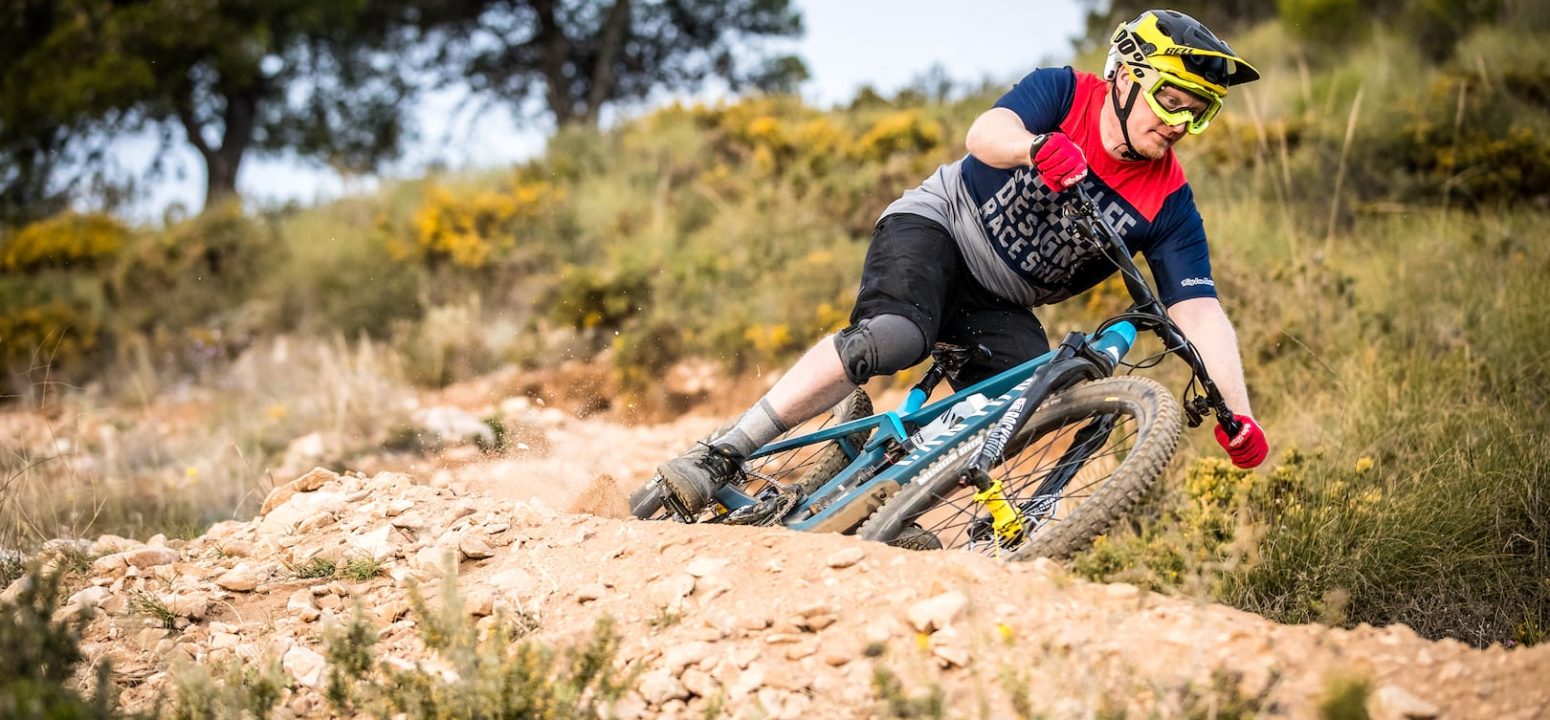

This is the MK3 surely? The original Strive had 26″ wheels
Who writes this shit?
I mean, are you a journalist or just some guy who was deliverin pizza at the moment Canyon called anouncing product launch?
I stopped reading after “For the 2019 Strive, Canyon has really pumped up the geo and we’re looking at a bike that is considerably longer than the previous generation model” – for Budha sake, just fukin google it, before you post it, surley your deadlines can’t be that tight?
Hope the rest of “the article” is much better!